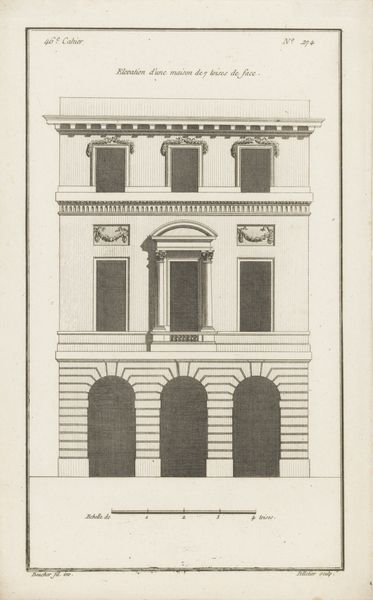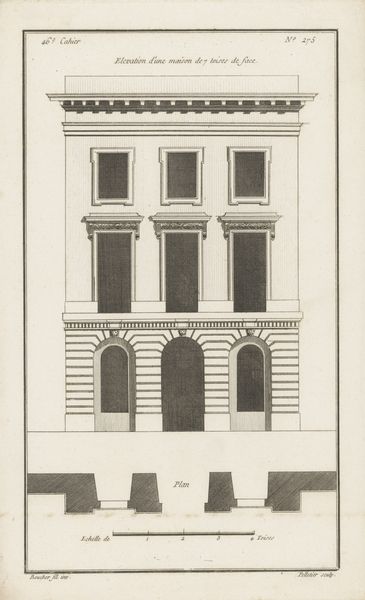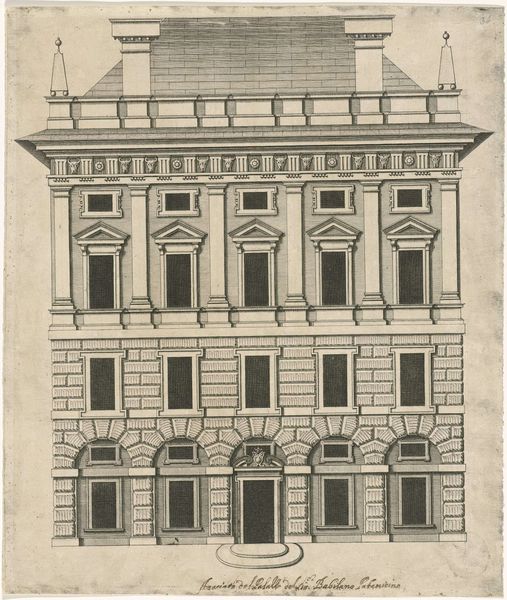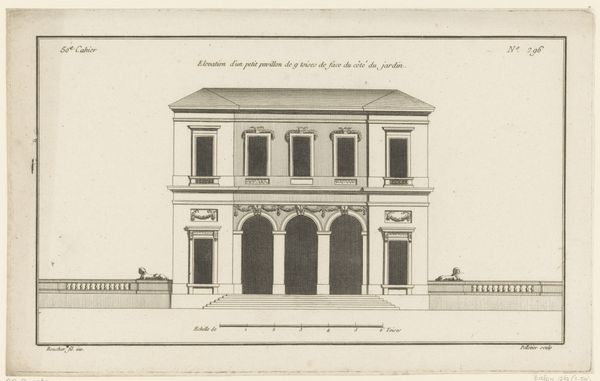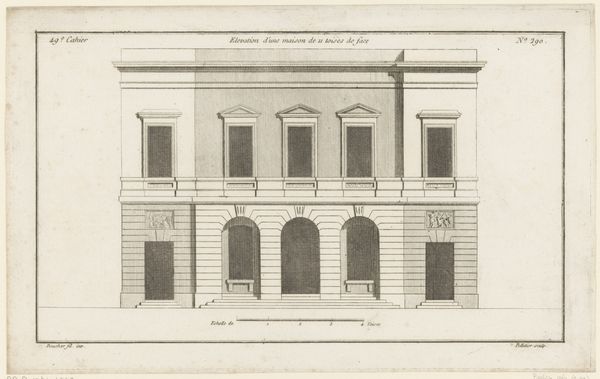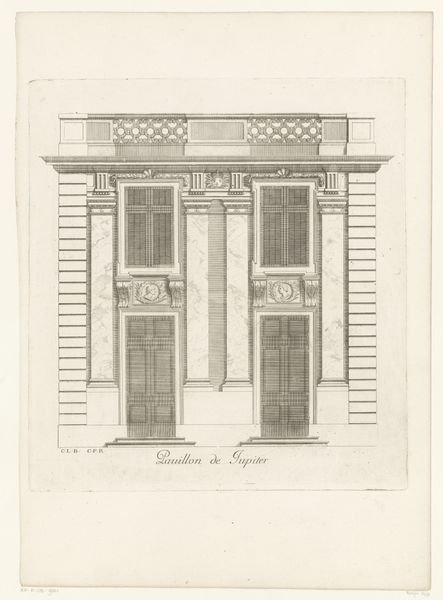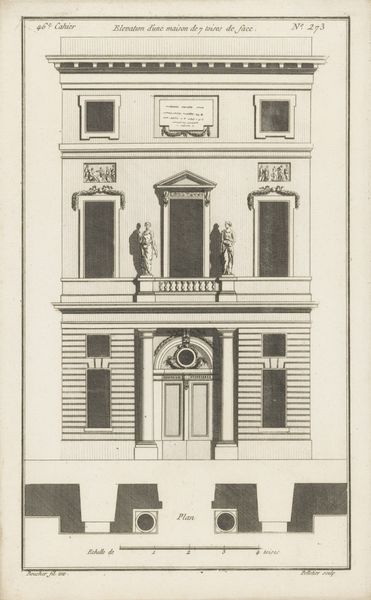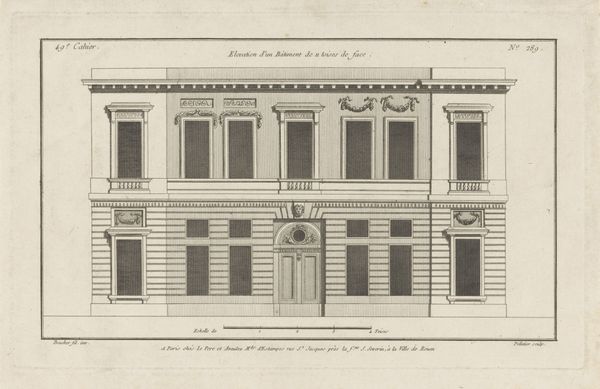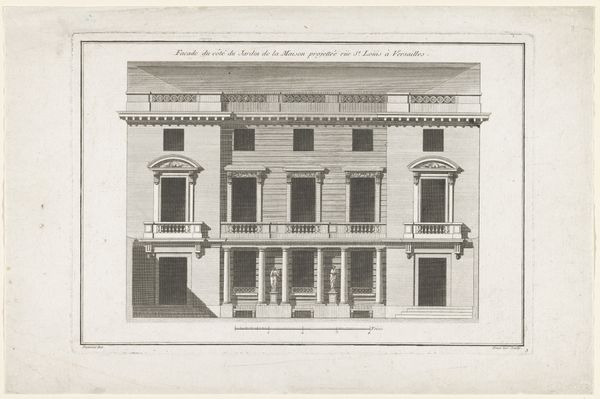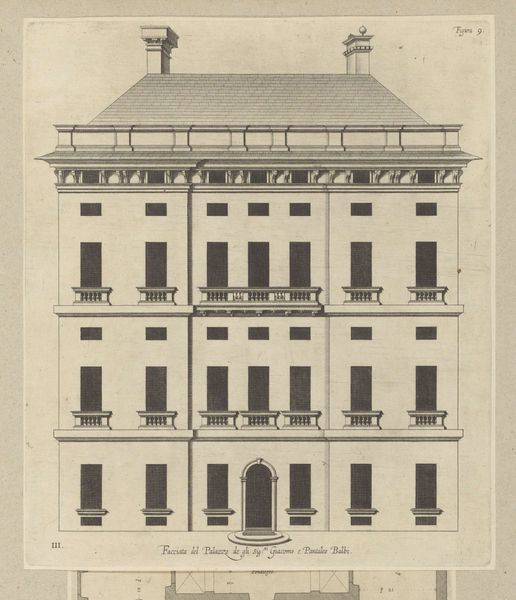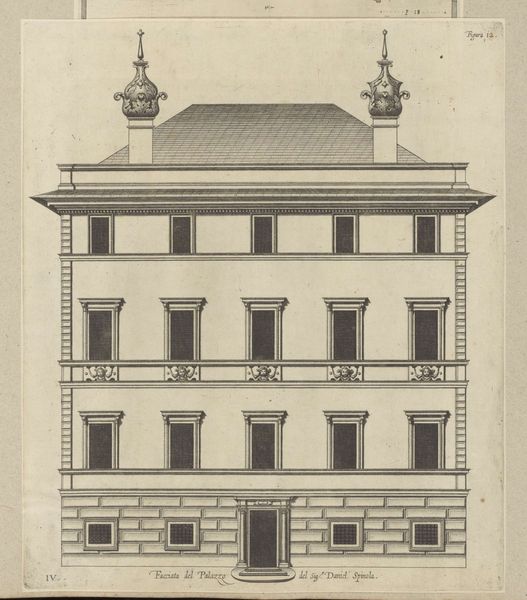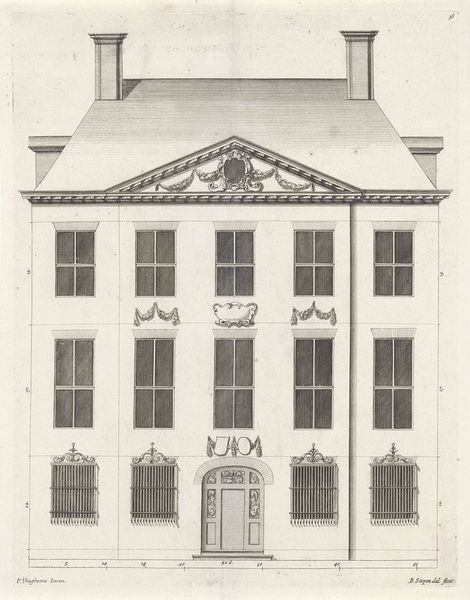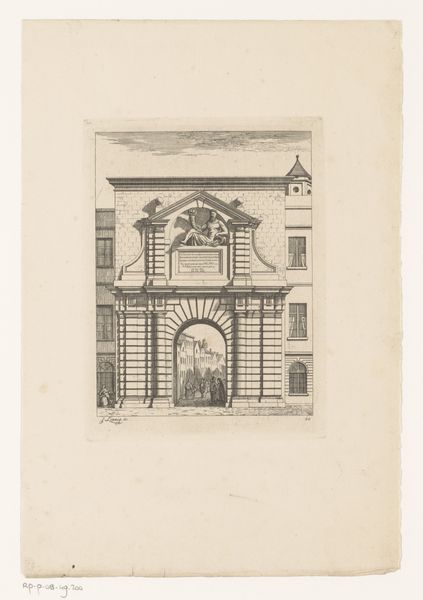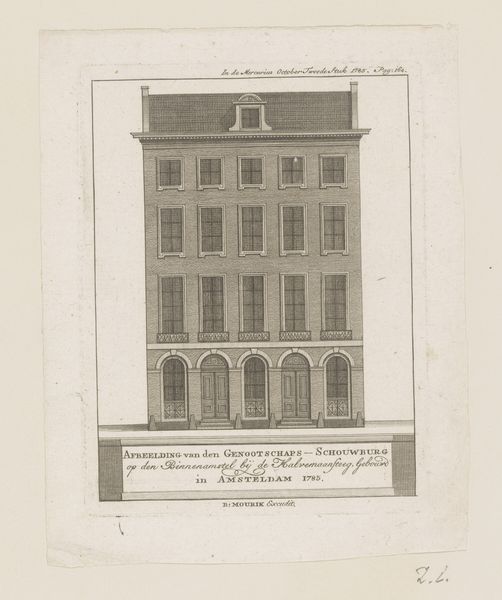
drawing, paper, architecture
#
drawing
#
neoclacissism
#
paper
#
column
#
architecture
#
building
Dimensions: height 328 mm, width 206 mm
Copyright: Rijks Museum: Open Domain
Editor: This is Jean Pelletier's "Facade met zuilen en balkon," or "Facade with columns and balcony" from sometime between 1772 and 1779. It's a drawing on paper. I'm immediately struck by how symmetrical it is, and it makes me wonder, what is communicated through this calculated composition? Curator: Symmetry, especially in architectural drawings like this one, can evoke a sense of order, balance, and even idealized perfection, recalling Neoclassicism. Do you notice any particular symbols or recurring motifs? Consider the friezes or the crest at the top. Editor: I see garland-like carvings above the second-story windows, and there is definitely a crest right at the very top, flanked by what looks like statues or maybe sculpted figures. What could they signify? Curator: The garlands could represent celebration or victory, traditional symbols used to highlight important places, while the crest likely identifies a family, perhaps the owners of the planned house. Who were they? What were their values? Such elements reinforce status and historical lineage through visual language. Also, consider the two figures alongside the crest, likely personifications of virtues or ancestral heroes; these create links to classical ideals, reinforcing legitimacy. Editor: That makes sense. So, by including those specific symbols, Pelletier isn't just drafting a building; he's also trying to imbue it with meaning that resonates with a certain time and cultural tradition. Curator: Precisely! The facade becomes more than a functional element, instead becoming a vehicle to express ideas about power, memory, and cultural identity. Editor: I hadn't thought about a facade as such a concentrated symbolic display before. It gives me a lot to consider.
Comments
No comments
Be the first to comment and join the conversation on the ultimate creative platform.
